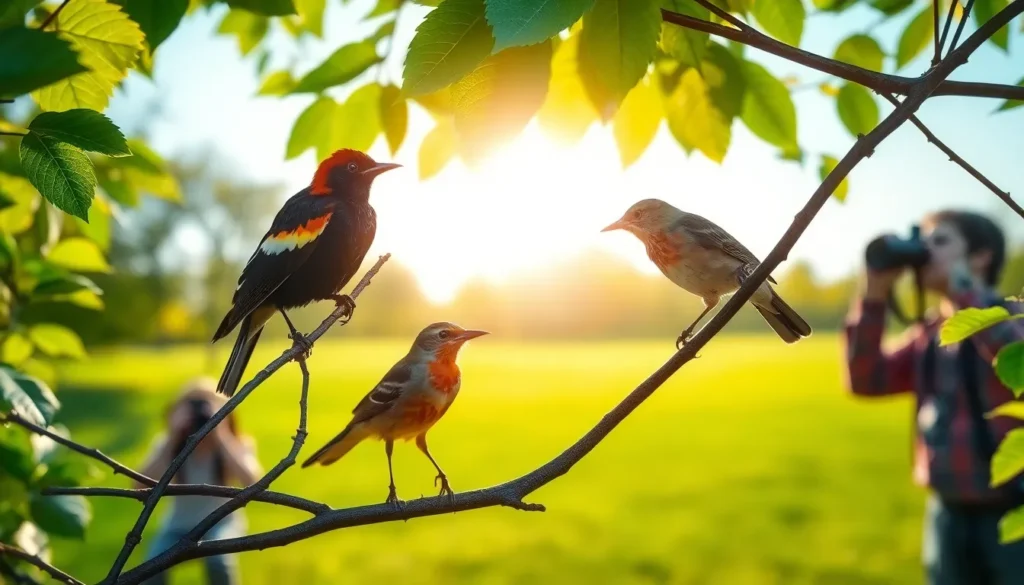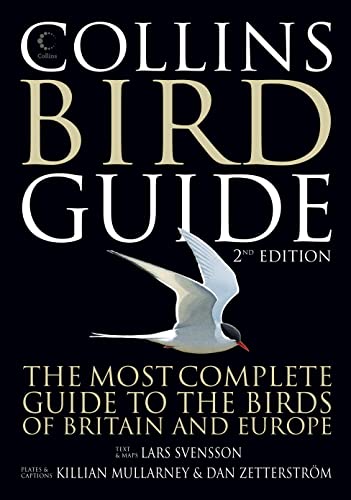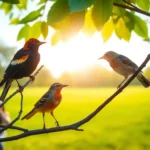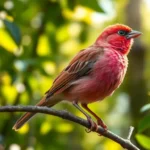We’ve all wondered about the fascinating stories behind the names of our feathered friends. From the Ruby-throated Hummingbird to the Great Horned Owl, bird names aren’t just random labels – they’re windows into history, culture, and the natural industry around us.
Every bird name tells a unique tale. Some honor the explorers who first discovered them while others describe their most striking features or behaviors. The Northern Mockingbird gets its name from its incredible ability to mimic other sounds, while the Red-winged Blackbird is named for its distinctive scarlet shoulder patches.
Understanding how birds got their names transforms ordinary birdwatching into an exciting journey through etymology and natural history. Whether you’re a seasoned ornithologist or just starting to notice the birds in your backyard, discovering the origins of bird names will deepen your appreciation for these remarkable creatures and the people who named them.
Common Bird Names and Their Origins
Common bird names reveal fascinating stories about discovery, observation, and human interpretation of nature. We uncover linguistic treasures when examining how these familiar species received their identities.
Etymology of Popular Species Names
Popular bird species names demonstrate the direct connection between appearance and nomenclature. Cardinals earned their name from Catholic cardinals’ red robes, while blue jays reflect their vibrant azure plumage. Robins received their designation from European settlers who recognized similarities to the European robin redbreast.
Behavioral characteristics shaped many species names throughout ornithological history. Nuthatches describe birds that wedge nuts into bark crevices and hack them open with their bills. Woodpeckers reference their distinctive drilling behavior on tree trunks. Flycatchers capture insects mid flight, earning their descriptive moniker from this hunting technique.
Geographic origins influenced many common bird names across North America. Baltimore orioles honor Lord Baltimore’s family colors of orange and black from colonial Maryland. Carolina wrens commemorate the southeastern states where early naturalists first documented these birds. California condors bear the name of their primary habitat range along the Pacific coast.
Size and physical attributes created straightforward naming patterns for familiar species. Great blue herons distinguish themselves from smaller heron species through their impressive stature. Ruby throated hummingbirds showcase their distinctive red throat patches that shimmer in sunlight. White breasted nuthatches display their characteristic pale chest coloring that contrasts with darker backs.
Regional Variations in Naming Conventions
Regional naming conventions reveal how local cultures interpreted the same bird species differently. Northern mockingbirds appear as “mocking birds” in southern dialects but “polyglot birds” in academic circles. Eastern bluebirds carry names like “blue robins” in some rural communities where residents compare them to more familiar species.
Indigenous naming traditions contributed unique perspectives to bird nomenclature across different territories. Native American tribes used descriptive terms that emphasized spiritual connections rather than physical appearance alone. These names often referenced seasonal behaviors, migration patterns, or mythological associations that European settlers later adapted or replaced.
Colloquial variations emerged from local observations and cultural preferences in different regions. House sparrows became “English sparrows” in areas with strong British settlement patterns. American goldfinches transformed into “wild canaries” among communities that kept domestic canaries as pets. Barn owls received names like “ghost owls” or “white owls” depending on regional folklore.
Historical settlement patterns influenced bird naming conventions throughout various geographic areas. German immigrants introduced terms that described similar European species they recognized. French explorers contributed names that emphasized elegance or beauty in bird appearance. Spanish colonists added designations that reflected Mediterranean ornithological traditions.
Scientific vs. Common Bird Names
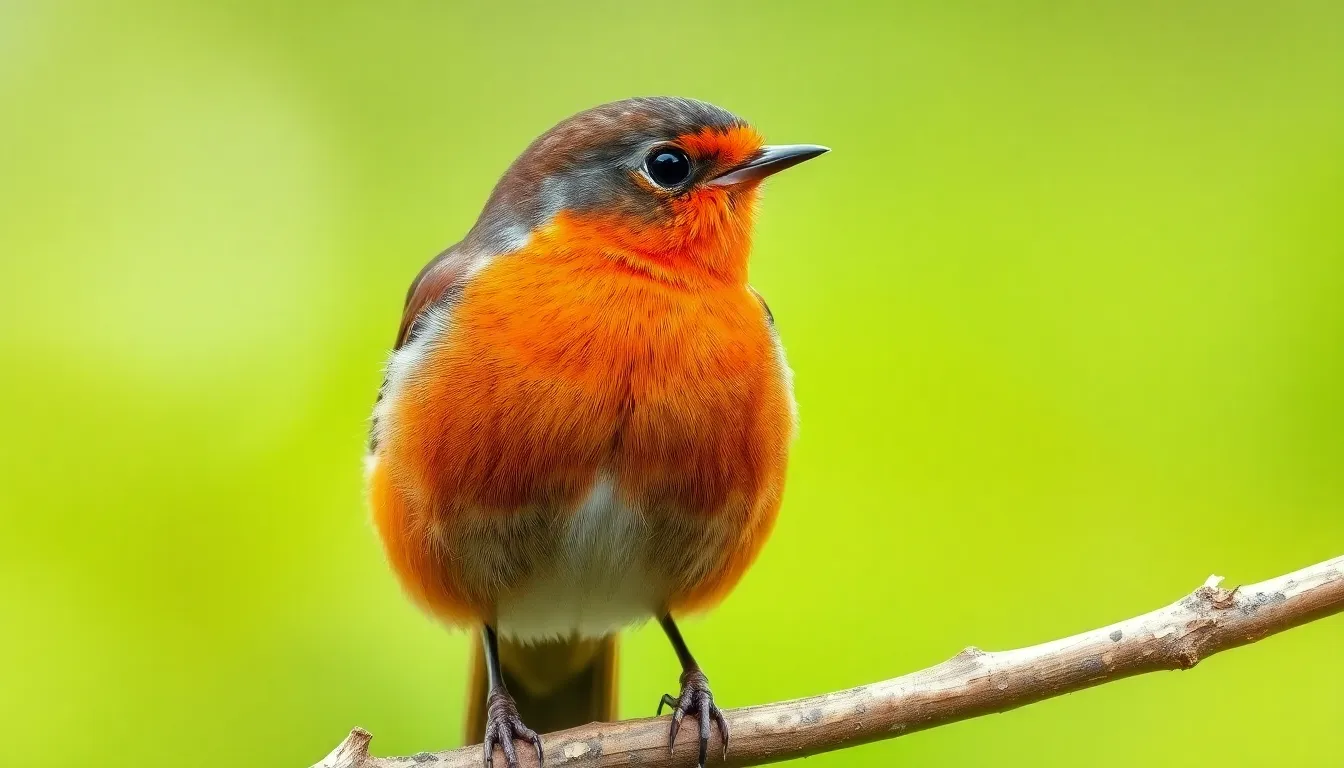
Scientific bird names provide universal precision while common names offer cultural richness and regional familiarity. Understanding both systems enhances our birding experience and connects us to the global ornithological community.
Understanding Binomial Nomenclature
Binomial nomenclature creates a standardized two-part naming system that scientists worldwide recognize for every bird species. Carl Linnaeus developed this system in the 18th century, establishing genus and species classifications that remain consistent across languages and cultures.
Each scientific name contains two Latin components: the genus identifies closely related species, while the species designation pinpoints the exact bird. Turdus migratorius represents the American Robin, where Turdus groups all true thrushes and migratorius describes this particular species’ migratory behavior.
Latin terminology eliminates confusion that arises from multiple common names for identical species. European settlers called various red-breasted birds “robins” throughout North America, but only Turdus migratorius specifically identifies our familiar backyard species. Scientific names also reveal evolutionary relationships between species within genera like Corvus (crows and ravens) or Picidae (woodpecker family).
Taxonomic updates occur when genetic research reveals new relationships between bird species. Recent DNA analysis reclassified several warbler species from Dendroica to Setophaga, demonstrating how scientific nomenclature adapts to expanding biological knowledge.
Why Scientific Names Matter for Bird Identification
Accurate bird identification requires scientific names because common names vary dramatically across geographic regions and cultural backgrounds. A single species might carry dozens of local names, creating identification challenges for birders traveling between areas or consulting international field guides.
Sialia sialis eliminates confusion surrounding Eastern Bluebird identification, particularly when distinguishing it from Western Bluebird (Sialia mexicana) and Mountain Bluebird (Sialia currucoides). Common names like “blue robin” or “blue redbreast” historically applied to multiple species, making precise identification impossible without scientific classification.
Field guides organize bird species using taxonomic order, grouping related genera and families together based on evolutionary relationships. Scientific names help birders locate species quickly within these guides and understand which birds share similar characteristics, behaviors, or habitats.
eBird and other citizen science platforms rely on scientific nomenclature to maintain global databases of bird observations. Contributors from different countries can record the same species using consistent scientific names, creating valuable migration patterns and population data regardless of local language differences.
Subspecies identification becomes crucial for serious birders documenting regional variations within widespread species. Junco hyemalis encompasses multiple subspecies of Dark-eyed Juncos, each with distinct plumage variations and geographic distributions that common names alone cannot adequately differentiate.
Cultural Influences on Bird Naming
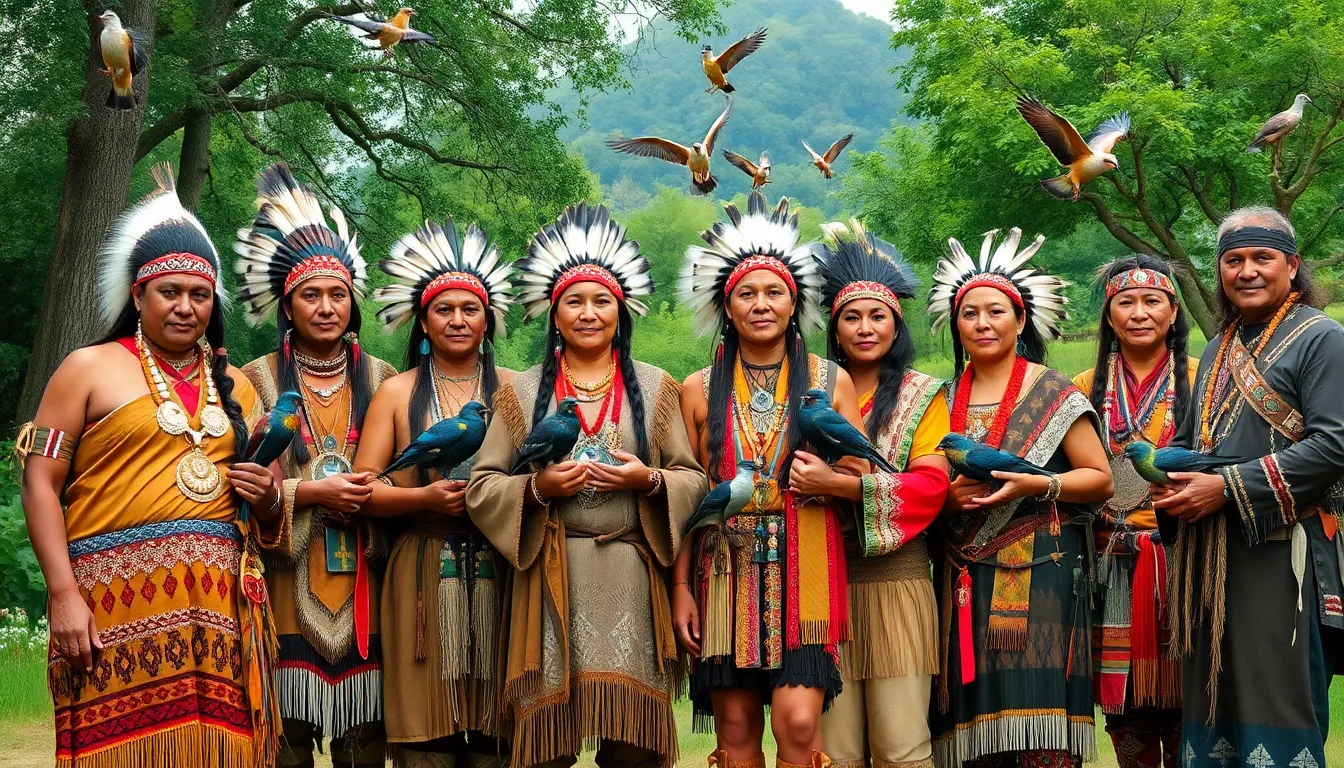
Cultural traditions across different societies have profoundly shaped the bird names we use today. Various civilizations contributed unique perspectives and linguistic patterns that reflect their relationships with avian species.
Native American Contributions to Bird Names
Native American tribes established foundational bird names that emphasized spiritual connections and behavioral observations. The term “chickadee” originates from Algonquian languages, mimicking the bird’s distinctive call pattern. Tribal naming conventions often incorporated seasonal meanings, with many woodpecker names deriving from indigenous words describing their drumming sounds.
Indigenous communities recognized exact migration patterns and incorporated them into naming systems across 574 federally recognized tribes. The name “catbird” traces back to Native American observations of the gray catbird’s mewing calls. Coastal tribes contributed names like “scoter” from Abenaki words describing diving behaviors of sea ducks.
Traditional ecological knowledge influenced modern bird names through early European contact with indigenous guides. Native Americans distinguished between similar species using habitat preferences, leading to names like “wood duck” and “ring-necked duck” that persist today. Ceremonial importance shaped names for raptors, with “thunderbird” concepts influencing several eagle and hawk names across different regions.
European Colonial Impact on Modern Naming
European colonists introduced systematic naming conventions that dominated American bird nomenclature from the 1600s onward. Settlers frequently named birds after familiar European species, creating names like “American robin” and “New Industry warblers” to distinguish them from Old Industry counterparts. Colonial explorers honored European nobility and scientists through bird names, establishing patterns that ornithologists continue using.
Religious influences from European Christianity shaped names like “cardinal” referencing red clerical vestments and “bishop” describing certain tanager species. Geographic naming conventions emerged as colonists commemorated European locations, resulting in names like “Lapland longspur” and “Eurasian wigeon” for northern species.
Scientific expeditions funded by European institutions standardized many bird names during the 18th and 19th centuries. Prominent ornithologists like Alexander Wilson and John James Audubon established English names that reflected European linguistic structures while incorporating American geographic features. Colonial settlement patterns determined which regional names gained widespread acceptance, with eastern seaboard terminology often superseding indigenous names.
Military and commercial expeditions documented birds using European descriptive frameworks that emphasized physical characteristics over behavioral or spiritual attributes. Trading companies established bird names along commercial routes, spreading standardized terminology across expanding territories.
Descriptive Bird Names Based on Physical Features
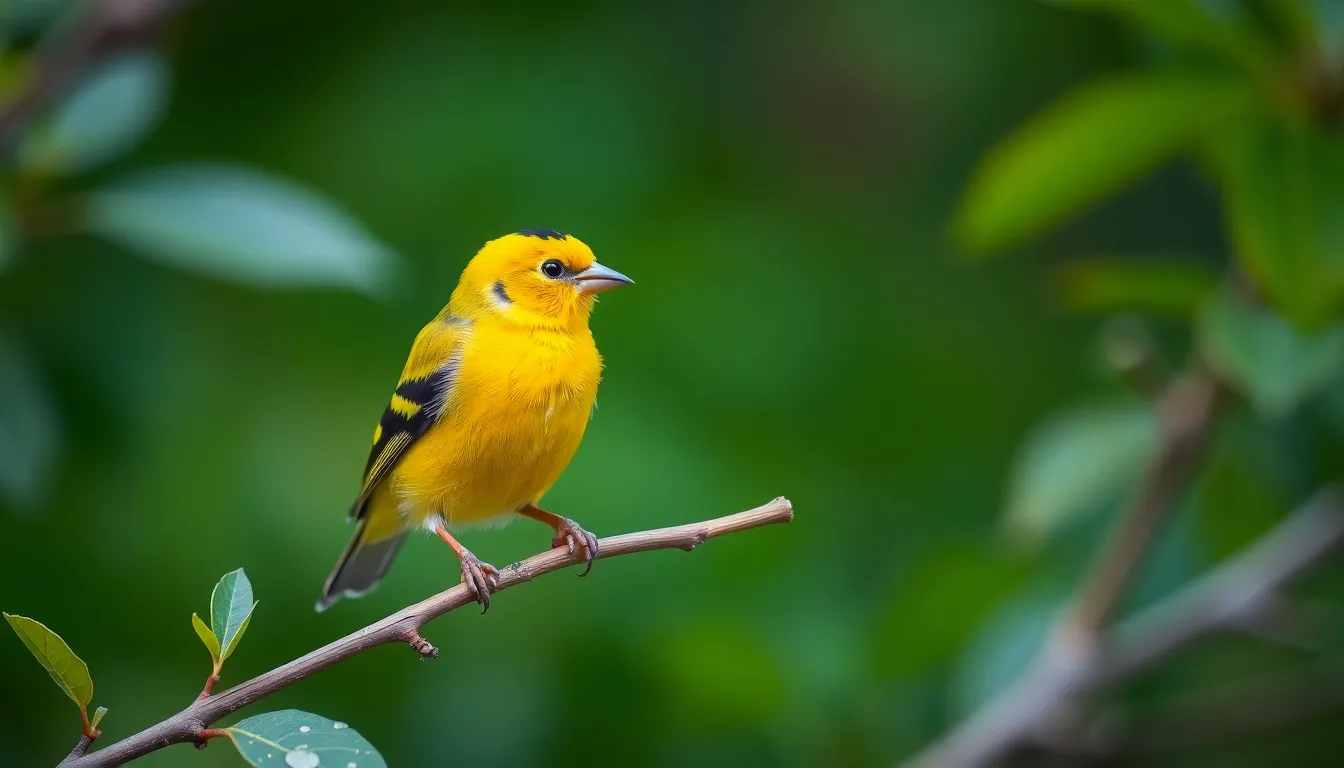
Physical characteristics provide the foundation for many bird names we encounter in nature. These descriptive names create immediate visual connections that help birders quickly identify and remember species.
Color-Based Names
Color dominates bird naming conventions across virtually every species we observe in North America. The American Goldfinch displays brilliant yellow plumage that directly inspired its common name, while the Scarlet Tanager showcases vibrant red coloration that makes identification unmistakable. Cardinals earned their name from the rich red robes worn by Catholic cardinals, establishing a cultural connection between religious symbolism and avian appearance.
Primary color descriptors appear in dozens of species names including Blue Jay, Red-winged Blackbird, and White-breasted Nuthatch. These names often combine multiple color references to distinguish similar species, such as the Rose-breasted Grosbeak versus the Black-headed Grosbeak. Seasonal color changes influence naming patterns as well, with the American Robin retaining its name even though dramatic plumage variations between males, females, and juveniles.
Regional color variations create subspecies distinctions that affect naming conventions. The Dark-eyed Junco encompasses multiple subspecies with different color patterns, from the slate-colored eastern form to the Oregon form with distinct hood markings. Iridescent colors generate particularly descriptive names, with species like the Common Grackle and European Starling displaying metallic sheens that shimmer in sunlight.
| Color Category | Example Species | Exact Feature |
|---|---|---|
| Primary Colors | Blue Jay | Bright blue crest and wings |
| Compound Colors | Rose-breasted Grosbeak | Pink triangular breast patch |
| Metallic Colors | Common Grackle | Iridescent purple-green head |
| Pattern Colors | Red-winged Blackbird | Bright red shoulder patches |
Size and Shape Descriptors
Body proportions and overall size create distinctive naming patterns that reflect immediate visual impressions. Great Blue Heron combines size and color descriptors, emphasizing both the bird’s impressive stature and distinctive blue-gray plumage. Comparative sizing appears in names like Greater and Lesser Yellowlegs, where direct size comparison distinguishes two closely related sandpiper species.
Shape exact terminology targets unique physical features that set species apart from their relatives. Long-billed Curlew describes the extremely curved, elongated bill used for probing deep into sand and mud. Short-eared Owl references the barely visible ear tufts that distinguish it from the prominent ear tufts of the Great Horned Owl. Body shape influences names like Belted Kingfisher, where the distinctive blue band across the chest creates a belt-like appearance.
Wingspan descriptions affect names of raptors and seabirds where flight silhouettes provide key identification features. Broad-winged Hawk displays proportionally wide wings compared to its body size, creating a distinctive flight profile during migration. Sharp-shinned Hawk references the thin, blade-like appearance of its wing tips and long tail that aid in forest hunting.
Proportional relationships between body parts generate compound descriptive names that combine multiple physical features. Red-headed Woodpecker specifies both color and the oversized head typical of woodpecker species. Thick-billed Murre distinguishes this seabird from the Common Murre through bill proportions that affect feeding behavior and habitat preferences.
Behavioral and Habitat-Inspired Bird Names
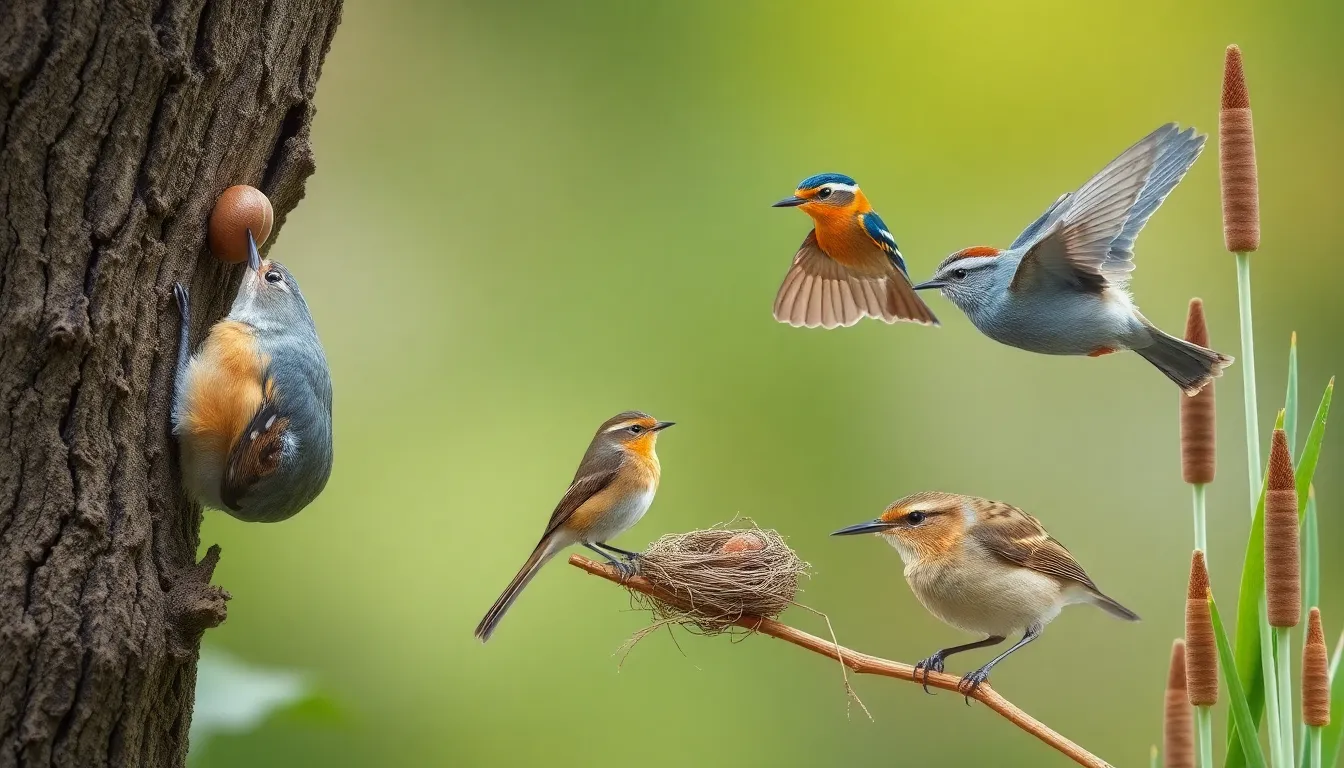
Bird names frequently capture the essence of how species live, feed, and interact with their environment. These behavior-based names create powerful mental connections between the birds’ actions and their identities, making field identification more intuitive for birders of all experience levels.
Names Reflecting Feeding Habits
Feeding behaviors generate some of the most memorable bird names in our field guides. Nuthatches earned their name from their distinctive habit of wedging nuts and seeds into tree bark crevices, then hammering them open with their bills. Flycatchers demonstrate their aerial hunting prowess through their name, which describes their technique of catching insects mid-flight from exposed perches.
Sapsuckers create neat rows of holes in tree bark to access sap, giving them their straightforward descriptive name. Seed-eating birds like Goldfinches showcase specialized diets through names that connect their identity to their primary food sources. Creepers methodically spiral up tree trunks searching for insects, with their name perfectly capturing this unique foraging pattern.
Ground-foraging species often carry names that reflect their feeding zones. Towhees scratch through leaf litter with distinctive double-scratch movements, while Juncos hop across forest floors seeking fallen seeds. Water birds demonstrate feeding specializations through names like Skimmers, which skim the water’s surface for small fish with their elongated lower mandibles.
Predatory feeding habits create dramatic name associations. Hawks, Eagles, and Falcons carry names that immediately convey their hunting prowess and dietary preferences. Owls hunt primarily at night, with many species carrying names that reflect their nocturnal feeding schedules and prey preferences.
Location and Nesting Pattern Names
Habitat preferences strongly influence bird naming conventions across different ecosystems. Marsh Wrens build their nests exclusively in wetland cattails and sedges, with their name immediately indicating their preferred environment. Field Sparrows inhabit open grasslands and agricultural areas, distinguishing them from their forest-dwelling relatives.
Nesting behaviors create distinctive naming patterns that help birders locate breeding pairs. Cavity nesters like Chickadees and Nuthatches excavate holes in dead wood, while Cup nesters like Cardinals build open structures in shrub branches. Platform builders such as Osprey construct large stick nests on elevated structures, often returning to the same sites annually.
Elevation preferences appear in names like Mountain Chickadee and Alpine Swift, which indicate exact altitudinal ranges where these species thrive. Coastal species carry names reflecting their shoreline habitats, such as Beach Grass Sparrows and Cliff Swallows. Forest edge species like Chats and Catbirds prefer transitional zones between wooded and open areas.
Migration patterns influence habitat-based names through seasonal territory descriptions. Boreal species spend breeding seasons in northern forests, while Tropical varieties remain in warmer climates year-round. Winter residents like Snow Buntings appear in temperate zones only during colder months, with their names reflecting these seasonal movement patterns.
Unusual and Quirky Bird Names
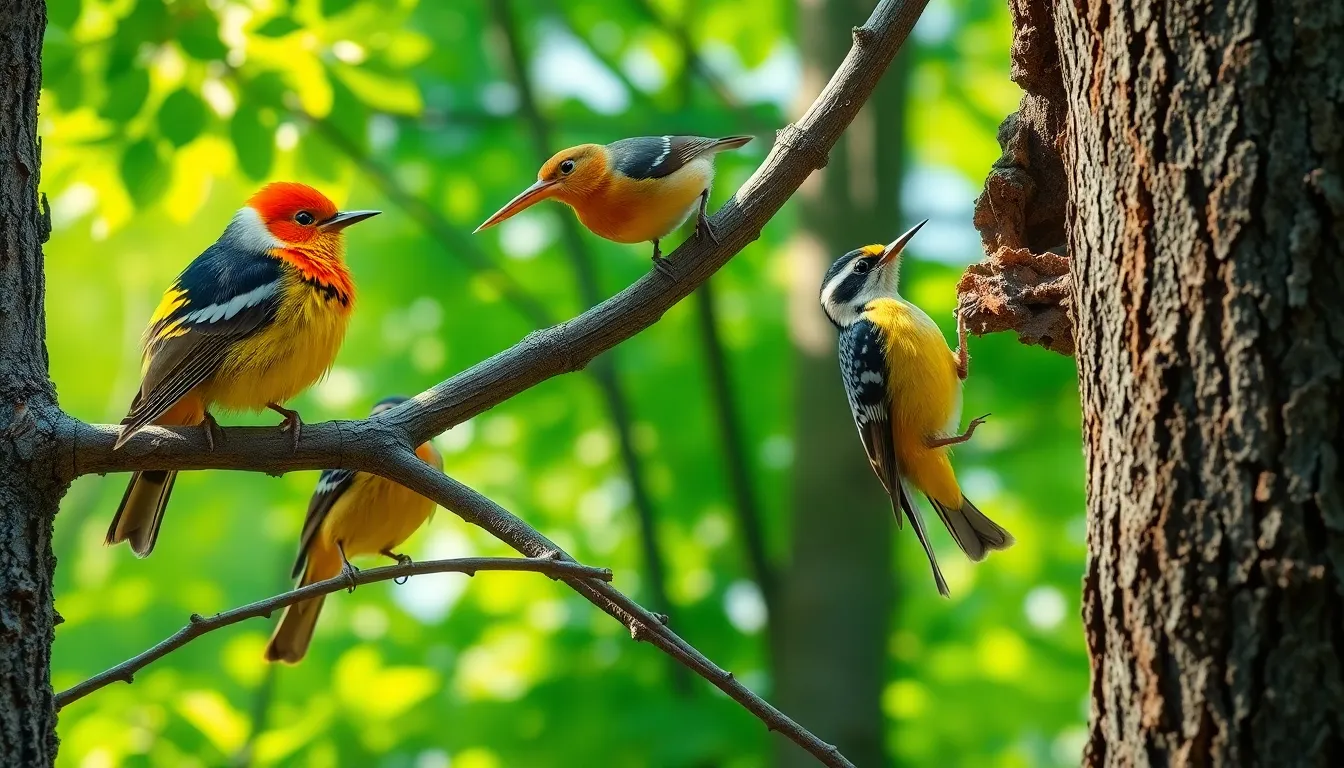
Bird names sometimes venture far beyond simple descriptions into territory that surprises, amuses, and puzzles both casual observers and seasoned birders. These unusual monikers reveal humanity’s creative streak in naming our feathered companions.
Humorous Common Names
We encounter some genuinely amusing bird names that showcase human creativity and whimsy in avian nomenclature. The Dickcissel derives its name from its distinctive “dick-dick-ciss-ciss-ciss” call, creating a phonetic masterpiece that birders remember instantly. Bobolinks earned their moniker from their bubbling, metallic song that resembles the sound “bob-o-link,” though early American farmers called them “reedbirds” or “ricebirds.”
Bushtits represent perhaps the most giggle-inducing name in North American birding, referring to these tiny, social birds that travel in flocks of 10-40 individuals. The Great Tit and Blue Tit continue this naming pattern, with “tit” deriving from Old Norse meaning “small bird.” Tufted Titmouse combines the diminutive “tit” with “mouse,” referencing the bird’s small size and gray coloring.
Yellow-bellied Sapsuckers carry a name that sounds like an insult but accurately describes their feeding behavior of drilling holes in tree bark to access sap. Killdeer earned their dramatic name from their piercing “kill-dee” call, not from any violent tendencies. The Willet’s name comes from its loud “pill-will-willet” cry that echoes across coastal marshes.
Names with Surprising Historical Context
We discover fascinating stories behind bird names that connect to unexpected historical figures and events. The McCown’s Longspur honors Captain John P. McCown, a Confederate general who collected the type specimen in Texas during the 1850s while serving as a Union Army naturalist before the Civil War.
Audubon’s Shearwater commemorates John James Audubon, but the species wasn’t actually discovered by the famous ornithologist. French naturalist Coenraad Jacob Temminck named it in Audubon’s honor in 1820, recognizing his contributions to American ornithology. Similarly, Wilson’s Warbler honors Alexander Wilson, often called the “Father of American Ornithology,” who identified and illustrated this species in his groundbreaking work “American Ornithology.”
Bonaparte’s Gull carries the name of Charles Lucien Bonaparte, Napoleon’s nephew, who became a respected ornithologist even though his imperial connections. He described this species in 1838 while living in Philadelphia and contributing significantly to American bird classification.
Cooper’s Hawk bears the name of William Cooper, a New York naturalist and one of the founders of the New York Lyceum of Natural History in 1817. His son, James Graham Cooper, also became a noted naturalist, creating confusion about which Cooper the bird actually honors.
Clark’s Nutcracker memorializes William Clark of the Lewis and Clark expedition, who first documented this remarkable bird during their historic journey across the American West from 1804-1806. The expedition’s detailed bird observations contributed 30 new species to North American ornithology, including this corvid that can remember thousands of seed cache locations.
Regional Bird Name Variations Across America

Regional bird naming patterns reveal fascinating cultural differences that developed across American landscapes over centuries. Geographic isolation and distinct settlement histories created unique naming traditions that persist in modern birdwatching communities.
East Coast vs. West Coast Differences
East Coast bird names frequently reflect colonial European influences and Native American linguistic roots that settlers encountered upon arrival. Atlantic coastal regions use traditional names like “yellowlegs” for Tringa species and “peep” for small sandpipers, terminology that originated from early maritime communities. New England birders commonly refer to Tachycineta bicolor as “tree swallow,” emphasizing habitat preferences observed by agricultural settlers.
West Coast naming conventions demonstrate Spanish colonial influence mixed with later American expansion terminology. Pacific coastal birders often use “gull” variations that specify regional characteristics, such as “western gull” for Larus occidentalis. California communities developed distinctive names like “scrub jay” for Aphelocoma californica, reflecting the chaparral network terminology that Spanish missionaries and Mexican settlers established.
Geographic barriers created isolated naming traditions that diverged significantly between coasts. Mountain ranges and vast continental distances prevented linguistic cross-pollination, allowing regional preferences to solidify into established conventions. Eastern birders typically use “warbler” classifications that emphasize seasonal migration patterns, while western communities favor habitat-exact descriptors that reflect permanent residency patterns.
Southern Dialects and Unique Names
Southern bird naming traditions showcase African American cultural contributions and rural agricultural influences that shaped regional terminology. Plantation communities developed names like “rice bird” for Dolichonyx oryzivorus, reflecting agricultural damage concerns that affected crop yields. Gullah communities along the South Carolina coast created unique names that combined West African linguistic patterns with English descriptors.
Appalachian regions use distinctive mountain terminology for common species, calling Turdus migratorius “mountain robin” in high elevation areas. Rural communities often employ names that emphasize behavioral characteristics relevant to farming activities, such as “bug catcher” for various flycatcher species. These agricultural naming patterns reflect practical observations that helped farmers identify beneficial bird species.
Gulf Coast states developed Spanish-influenced terminology that differs markedly from Atlantic coastal names. Louisiana birders frequently use French Creole terms mixed with English descriptors, creating hybrid names like “gros-bec” for various finch species. Texas communities blend Mexican Spanish bird names with cowboy terminology, producing regional variations that reflect cattle ranching culture.
Southern religious influences created unique spiritual naming patterns that emphasize moral or biblical connections. Baptist and Methodist communities often use names that reference scriptural passages, calling certain species “preacher bird” or “gospel bird” based on vocal characteristics. These faith-based naming traditions demonstrate how religious culture influenced ornithological terminology in rural Southern communities.
Modern Trends in Bird Naming
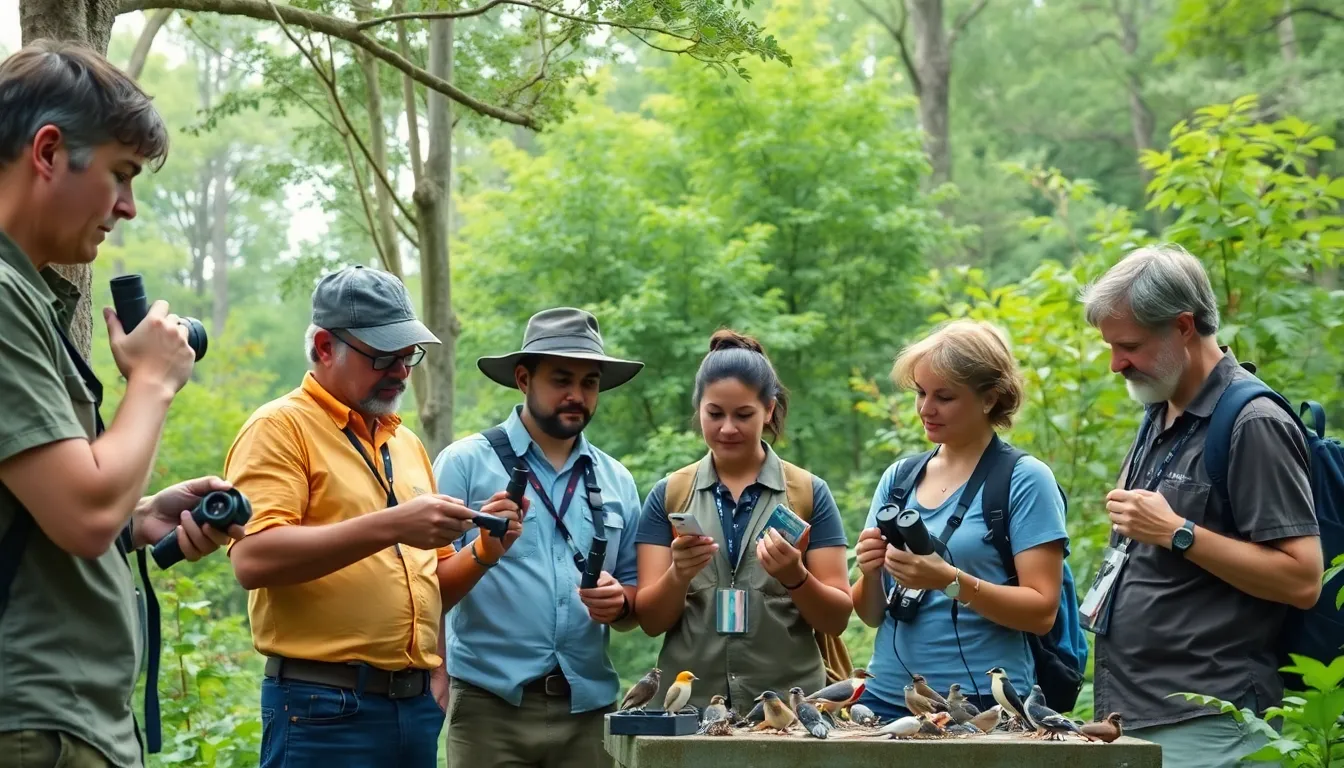
Modern bird naming reflects contemporary conservation awareness and scientific advancement. Recent discoveries and taxonomic revisions shape how we identify and classify avian species today.
Recent Species Discoveries and Naming
Recent species discoveries showcase systematic approaches to modern bird naming conventions. Scientists employ DNA analysis to identify cryptic species that appear identical but represent distinct evolutionary lineages. The Sulawesi Streaked Flycatcher and Sulawesi Brown Flycatcher emerged as separate species in 2019 after genetic studies revealed their unique characteristics.
Collaborative international research drives contemporary naming practices across multiple continents. Ornithologists from different countries coordinate species descriptions to ensure consistent nomenclature standards. The Tapanuli Orangutan discovery process demonstrates how modern naming incorporates local indigenous knowledge alongside scientific methodology.
Technology enhances species identification through bioacoustic analysis and advanced imaging techniques. Sound recordings differentiate between closely related species like the Pacific Slope Flycatcher and Cordilleran Flycatcher. Geographic isolation studies reveal distinct populations that warrant species status based on genetic divergence patterns.
Recent discoveries emphasize habitat exact naming that reflects ecological relationships. The Jocotoco Antpitta received its name from the Jocotoco Foundation conservation area where researchers first documented the species. Location based naming honors conservation organizations and protected areas that help species discovery efforts.
Conservation Efforts and Name Changes
Conservation driven name changes address historical naming controversies and cultural sensitivity concerns. The American Ornithological Society initiated systematic reviews of eponymous bird names honoring problematic historical figures. McCown’s Longspur became the Thick billed Longspur in 2020 following extensive community input and scientific review processes.
Collaborative naming committees include diverse stakeholders from indigenous communities and conservation organizations. The International Ornithologists’ Union coordinates global efforts to standardize name changes across different regions. Local birding communities participate in renaming discussions to ensure cultural appropriateness and regional acceptance.
Status based naming reflects conservation urgency for threatened and endangered species. The Javan Hawk Eagle retained its geographic identifier to highlight the species’ limited range and conservation needs. Habitat descriptive names like Forest Owlet emphasize network preservation requirements for species survival.
Digital platforms accelerate name change implementation across birding communities and scientific databases. eBird updates reflect new naming conventions within months of official adoptions. Field guide publishers coordinate with ornithological societies to maintain naming consistency across educational materials and identification resources.
Community engagement processes ensure broader acceptance of conservation motivated name changes among birders. Regional Audubon chapters host discussions about proposed name modifications before official adoptions. Educational campaigns explain the cultural and scientific reasoning behind naming revisions to maintain birding community cohesion.
Conclusion
Bird names serve as windows into our shared human experience with the natural industry. They capture centuries of observation discovery and cultural exchange while bridging the gap between scientific precision and everyday wonder.
Every time we identify a cardinal or listen to a mockingbird we’re participating in an ongoing conversation between past and present. These names connect us to indigenous wisdom European exploration and modern conservation efforts that continue shaping how we understand avian life.
The evolution of bird naming reflects our growing awareness of biodiversity and cultural sensitivity. As we discover new species and revisit historical naming practices we’re creating a more inclusive and accurate representation of our feathered neighbors.
Understanding the stories behind bird names enriches every birding experience and deepens our appreciation for both the creatures we observe and the diverse cultures that helped name them.
Frequently Asked Questions
What influences how birds get their names?
Bird names are influenced by several factors including physical appearance (like the Red-winged Blackbird’s distinctive markings), behaviors (such as the Northern Mockingbird’s mimicking ability), geographic origins (Baltimore Oriole), and historical figures who discovered them. Cultural traditions, indigenous naming practices, and religious influences also play significant roles in shaping bird nomenclature throughout history.
Why do birds have both common and scientific names?
Scientific names provide universal precision and eliminate confusion caused by regional variations in common names. While common names offer cultural richness and local familiarity, scientific names use binomial nomenclature (developed by Carl Linnaeus) to ensure consistent identification worldwide. This standardization is crucial for field guides, research, and citizen science platforms like eBird.
How did Native American cultures contribute to bird naming?
Native American communities provided foundational names that often reflect spiritual connections and behavioral observations. Many names mimic bird calls, like “chickadee,” or describe migration patterns and seasonal behaviors. Indigenous knowledge systems recognized complex bird behaviors and incorporated them into naming conventions, with many terms still used in modern bird nomenclature today.
What role does geography play in bird naming?
Geographic origins significantly influence bird names, with many species named after specific regions like Carolina Wrens or Baltimore Orioles. European colonists often named birds after familiar European species or honored European locations. Regional variations exist where different cultures interpret the same species differently, creating diverse local naming traditions across various geographic areas.
How are modern bird naming trends changing?
Modern bird naming reflects conservation awareness and scientific advancements. Recent DNA analysis has led to discovering cryptic species, while conservation efforts influence habitat-based naming. There’s increased incorporation of indigenous knowledge, community engagement in renaming processes, and addressing historical controversies. Digital platforms now facilitate rapid implementation of new naming conventions across birding communities.
What’s the difference between subspecies and species in bird naming?
Subspecies represent regional variations within the same species, important for serious birders documenting geographic differences. For example, Dark-eyed Juncos have multiple subspecies with distinct characteristics. While species names remain consistent, subspecies identification helps track regional variations and supports detailed field observations, contributing to our understanding of bird distribution and evolution patterns.

